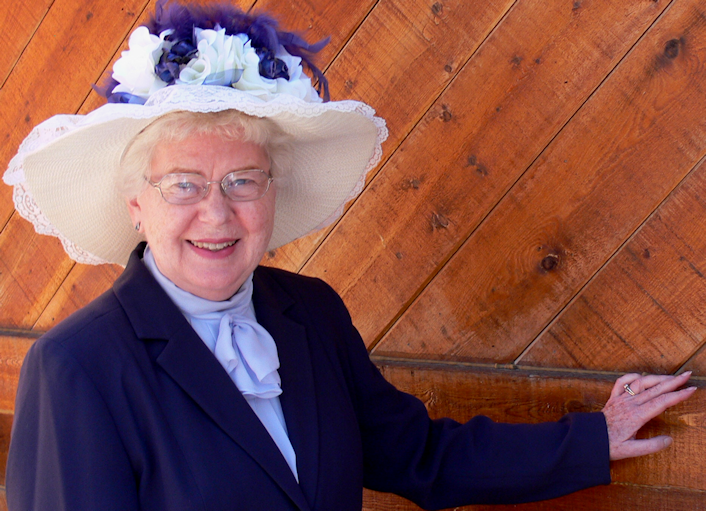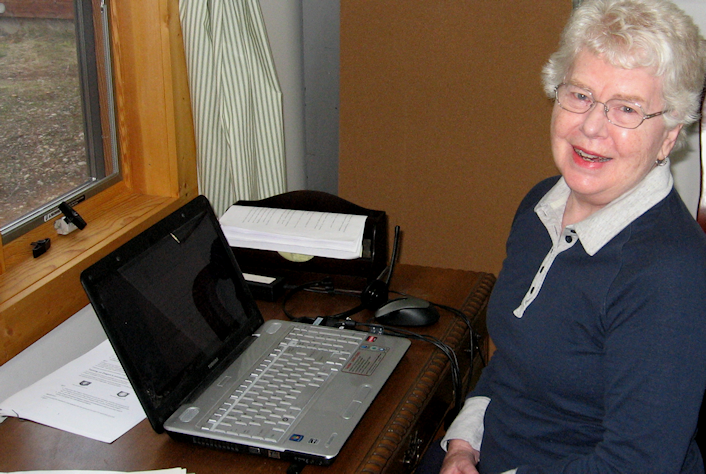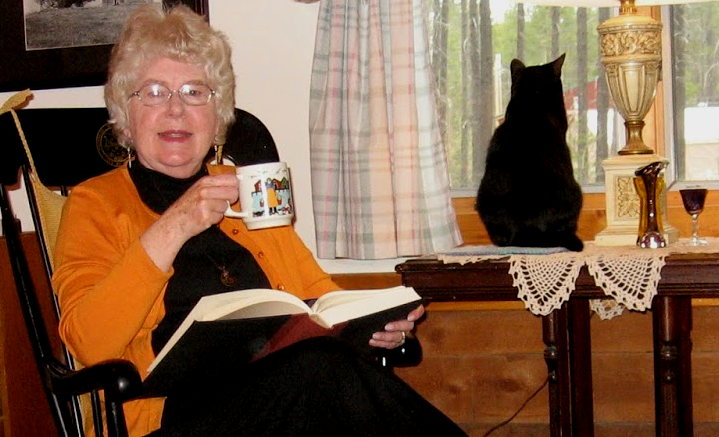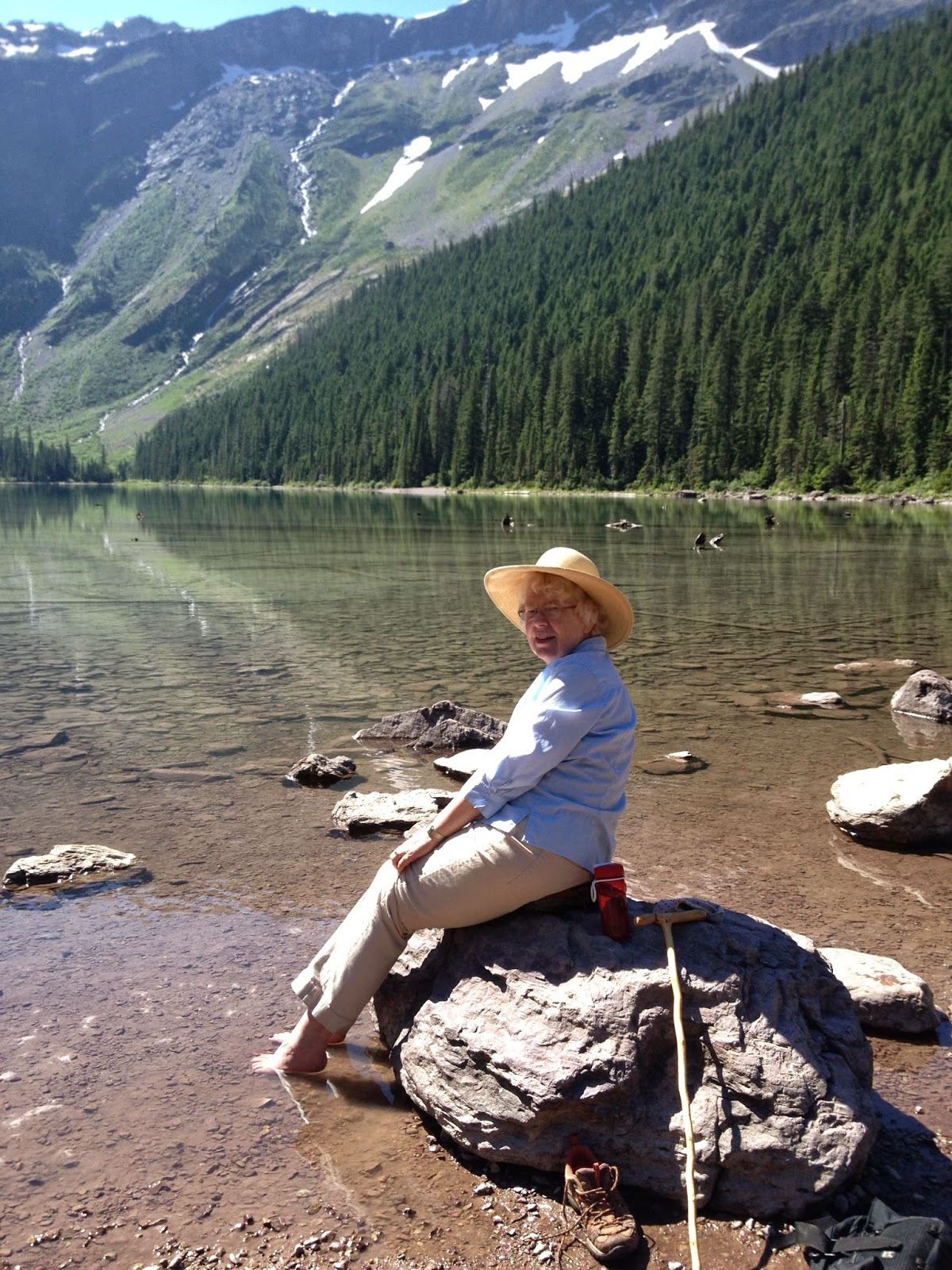
After fourteen years of practicing law, which included representing clients in some of the North Dakota’s earliest Civil Rights cases, and raising two children as a single mom, Karen moved to just outside Glacier National Park in Montana where her family owned land. She began finishing a rustic cabin and building a different kind of life. She began to explore Glacier and to write, publishing short stories and articles in publications both regional and national.Karen remarried, earned her teaching credentials, and headed off first to the Cheyenne River Sioux Reservation in south Dakota, then to the tiny Inupiaq village of Wales, Alaska, on the Bering Strait. It’s the westernmost point on the continental U.S., just 60 miles below the Arctic Circle. Circumstances there can be challenging. We’re talking being rescued from a polar bear by teenage boys on snowmachines!
Karen Brings all this adventure and insight into her writing as well as her love for the people in history who have gone before and for the remaining wild spaces that remind us of who we have been who we are, and who we could become.
Her work has been called “thought-provoking,” “gripping,” “at times heart-breaking,” and even “mind-jarring.”
INTERVIEW WITH KAREN

1. You are a self-described history buff and avid reader of historical fiction. What is your own history to date?
I’m a Montana native, happy to have come full circle. My husband and I live just a few miles outside Glacier National Park. I’ve lived in North Dakota, Michigan, South Dakota, and Alaska. My work life has included practicing law and teaching in colleges and public schools, most recently in Wales, an Inupiaq village on the tip of the Seward Peninsula on the Bering Strait. I devote my time now to writing, reading, hiking, visiting with friends, and watching movies. Our grown children live on each coast, and I visit them when I can and look forward to their visits with us.
2. You’ve written an archaeological thriller set in the Middle East and then switched to a frontier novel. What inspired you two such different stories?
Recent international events and personal history inspired me to write Remarkable Silence. So many groups claim to know the only route to divine approval. My husband actually thought up the “what if” plot and did much of the research. I took it from there. The world needs questioning, tolerance, and stories that grab readers’ imaginations.
As for River with No Bridge, I moved to Montana permanently in 1993 and fell in love with Glacier National Park and the country around it, especially the North Fork of the Flathead River. One day my mother and I were taking a drive around Lake McDonald inside the Park, and Mom said, “Someone should write a novel about the inholders.” Inholders were people who owned land inside what became Glacier National Park in 1910. I soon had thoughts of a story featuring an Irish immigrant woman who, after a series of life changing events, winds up settling on the North Fork with a Chinese man. River with No Bridge is the result. It will be published by Five Star Publishing in 2017.
Although the two books have different locations and time periods, I don’t see their themes as so different. Each has to do with tolerance, courage, freedom, and moral decisions.
3. Where and when do you work best?
I write in our small guest cabin, often all afternoon. Maybe because I was a self-employed single mom for many years, my irritating work ethic prods me to do maintenance chores before losing myself in the best life possible, being an author.
4. What tasks are involved in your writing life besides the strictly creative?
I belong to writers groups: Authors of the Flathead, the Historical Novel Society, Women Writing the West, and Montana Women Writers. Self-publishing and marketing Remarkable Silence turned out to be a steep learning curve. To satisfy my inner essayist, I have a blog that’s a mix of memoir and literary discussion, and contribute to Montana Women Writers’ blog, The View. I’m also working with the editors at Five Star to have River with No Bridge ready for publication in 2017. Marketing the books involves book signings, approaching sellers, speaking engagements, for just a few.
5. What are you reading now?
I begin each morning with a little poetry reading (Robinson Jeffers is a favorite.) or, more often these days, about ten pages from Will and Ariel Durant’s The Story of Civilization. I belong to a book club, Our Ladies of Perpetual Disappointment. In spite of our name, we encourage each other in the search for terrific books. The latest is The Last Report on the Miracles at Little No Horse by Louise Erdrich.
 6. What will follow River with No Bridge?
6. What will follow River with No Bridge?
I see it as the first of a trilogy about Nora and Jim Li’s family. Next will be Garden in the Sky to be followed by Not One Star Dulled. The former involves the family in WWI and its aftermath as well as the building of Going to the Sun Road in Glacier National Park. The latter will take the family through WWII.
7. What advice would you give a beginning writer?
First, never give up. Second, join a good critique group. Third, search diligently for the agent or editor who is looking for what you write. They often have specific criteria for what will meet their needs. I found a publisher for River with No Bridge because I saw that the acquisitions editor for Five Star Publishing’s Frontier Line was to speak and listen to authors’ pitches at a Historical Novel Society Conference. I went, met with her, and now I have a publisher.





